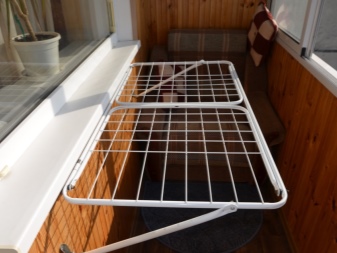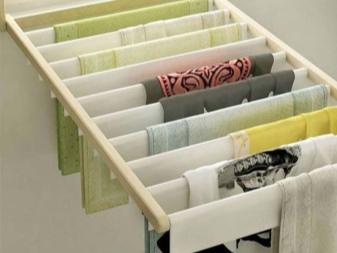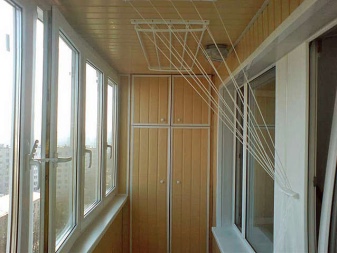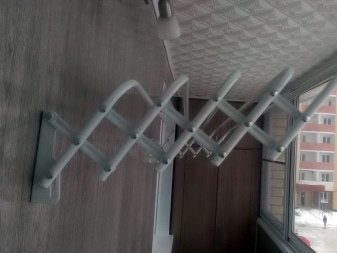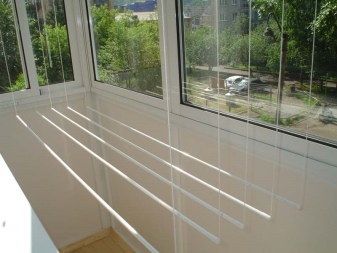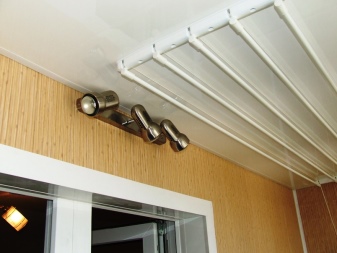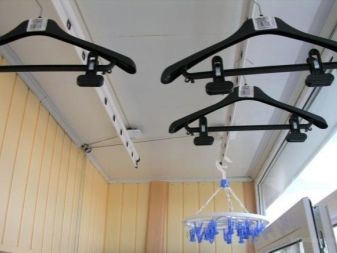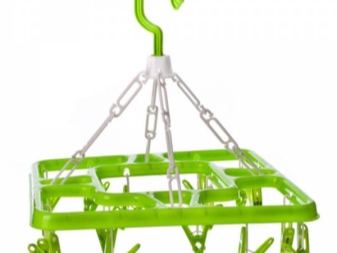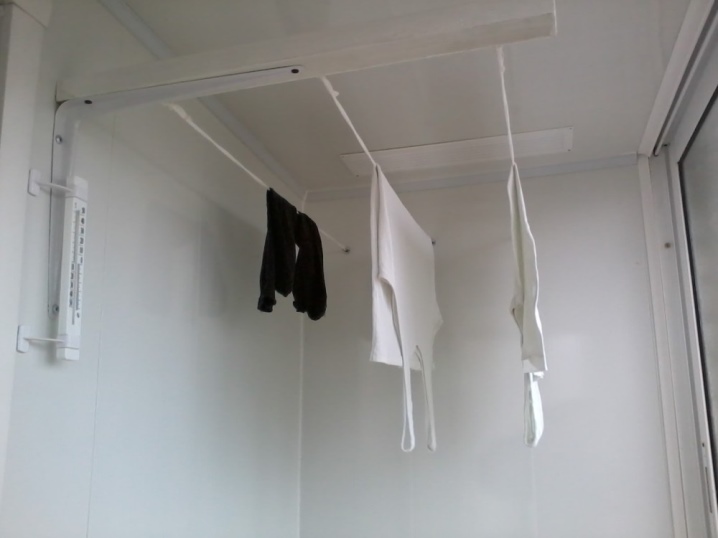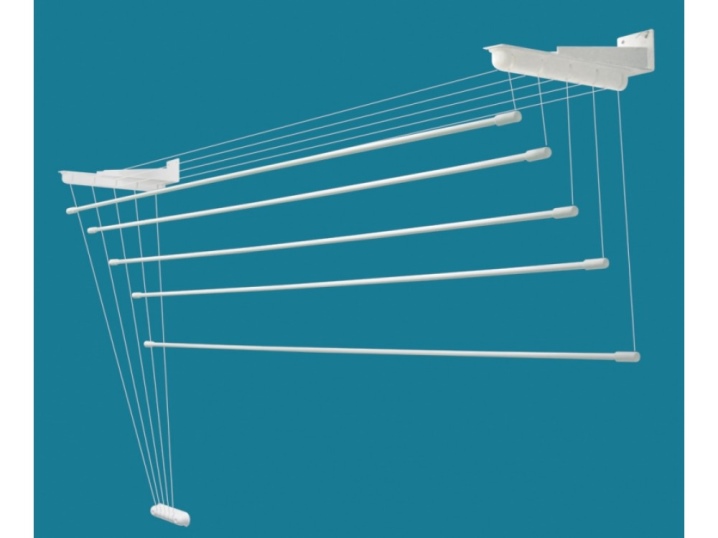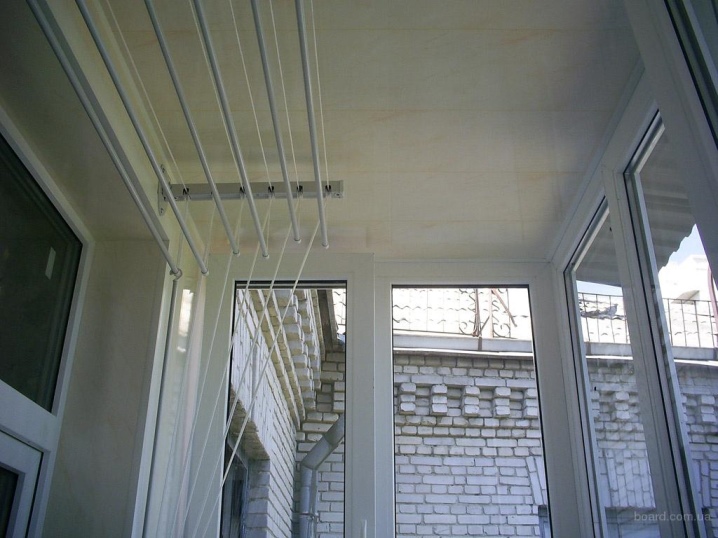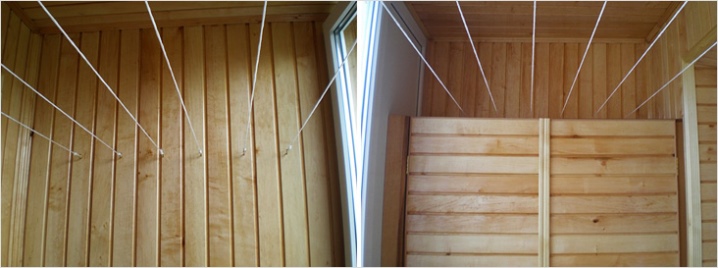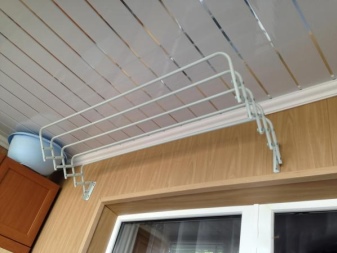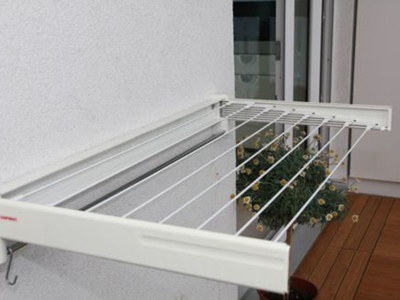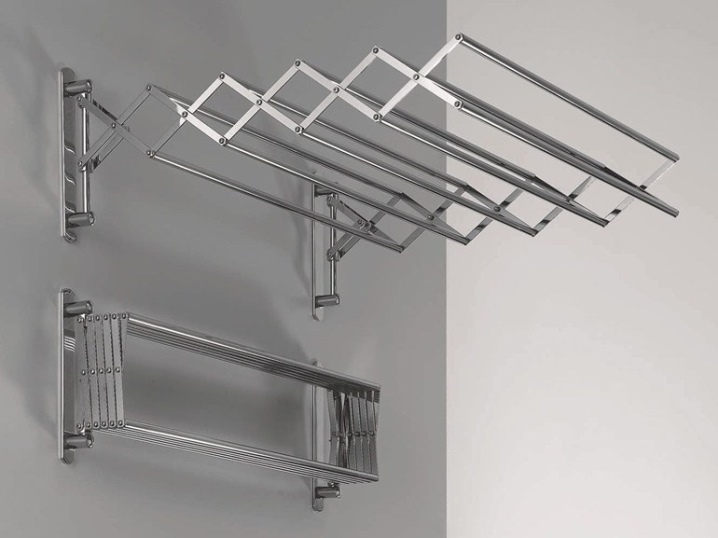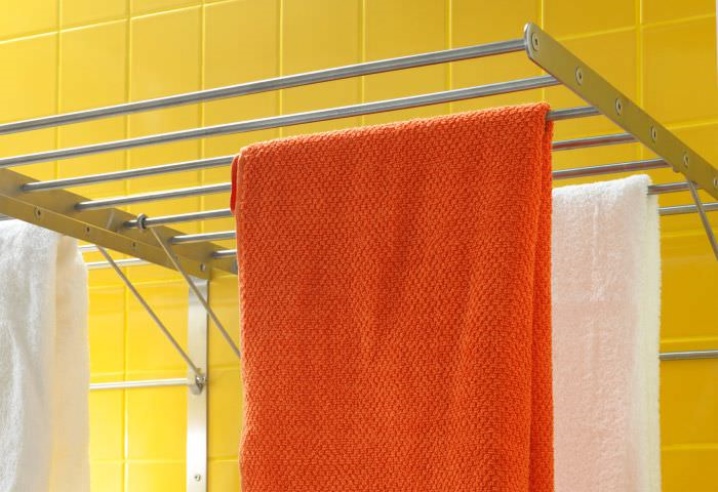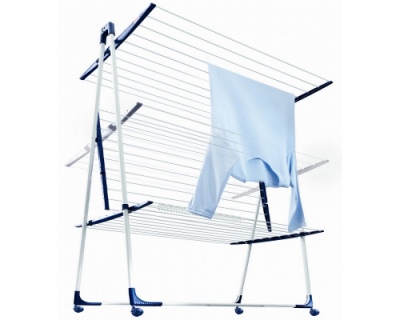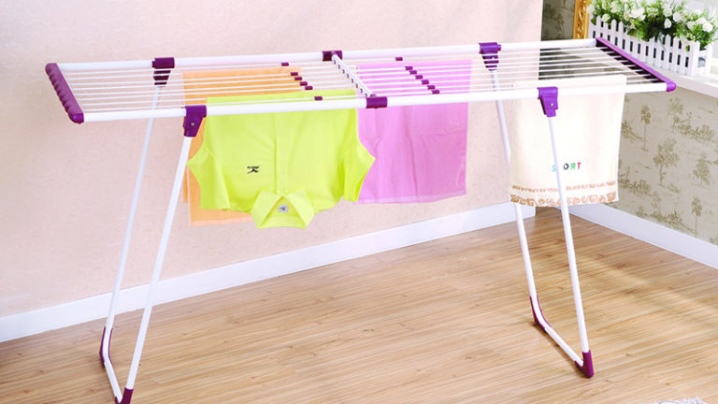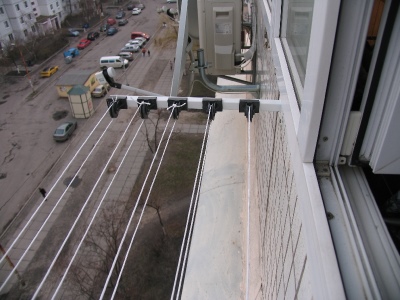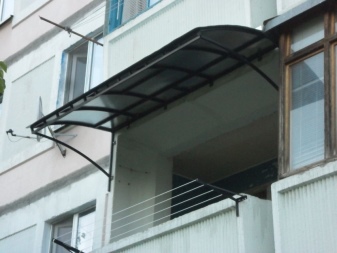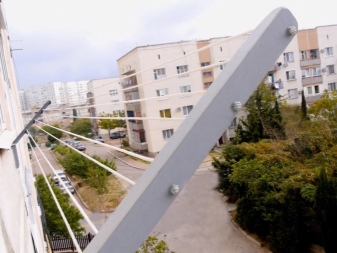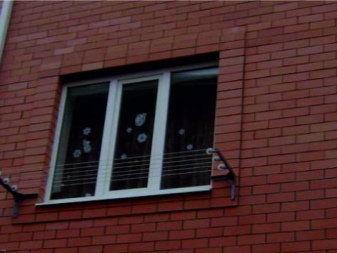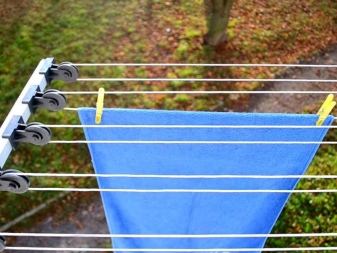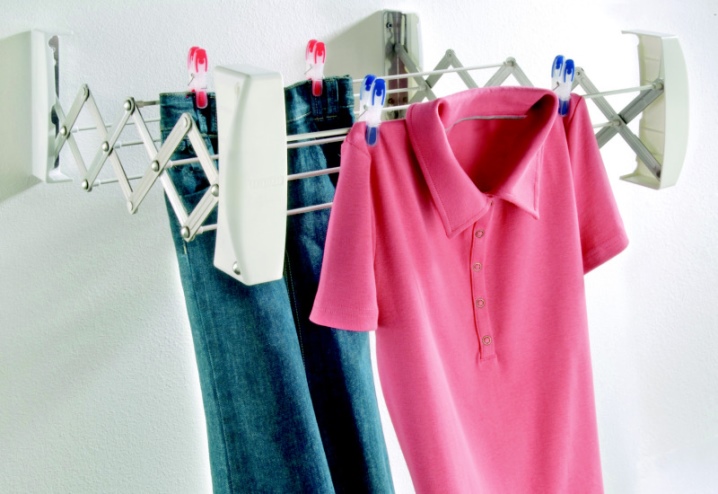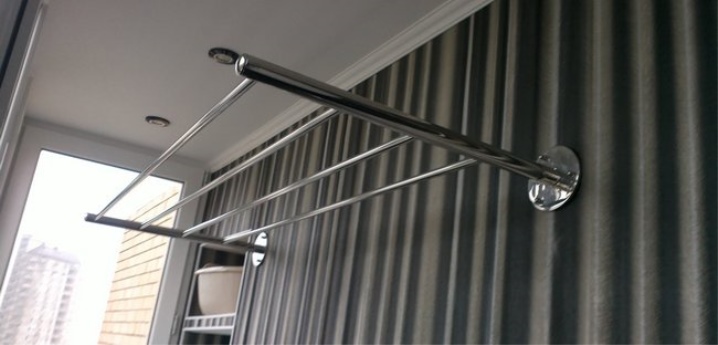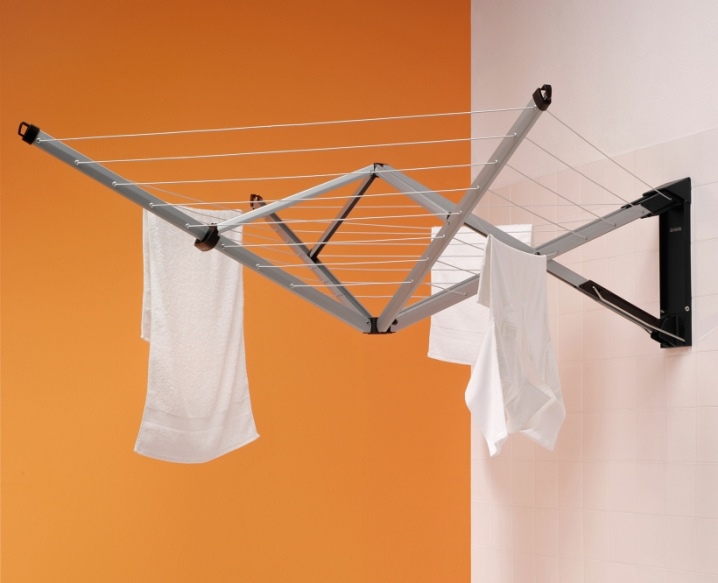Clothes dryer to the balcony
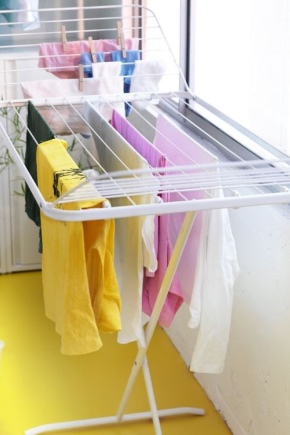
From time to time in every home there is a need to wash clothes. To date, this task is perfectly handled by a washing machine. Not all of them are equipped with a drying function, and not all of the washed products need to be pressed, which is why there is an urgent need to place the already washed laundry. The presence of a balcony or loggia makes it possible to organize the drying of things in this space with the help of modern dryers for laundry of various types and designs.
Types and features
Location and the expected load on the device must be considered when buying a particular version of the dryer.
Clutter and high humidity do not contribute to a comfortable rest, therefore, in the presence of a balcony or loggia, the washed laundry is most often located there.
There is a huge variety of clothes dryers, of various designs, with various ways of fastening and variants of execution, subdivided into external and internal.
The most numerous group is the internal one, including ceiling, wall and floor options.
Ceiling
The most modern and convenient type of dryer for the balcony is the ceiling one. The design of this type is mounted under the ceiling and allows you to use almost the entire width of the balcony, without occupying the rest of the balcony or loggia space.
The presence of a wide working area allows you to locate a large number of products at a time: the design, as a rule, is designed for a very significant weight. This is an indispensable thing for the simultaneous drying of several sets of bed linen, differing not only in size but also in weight.
This type of dryer is poorly suited for drying small items. The design is somewhat complicated to install and requires additional fixing options.
The easiest option is a plastic or metal frame, equipped with chains that are connected to a crochet hook.
The design is shaped like a pyramid. With the help of a hook, it can be hung on a ring attached to the ceiling or on a clothesline.
With the help of clothespins located on the frame, you can hang out small stretched things. Such a dryer in a suspended state does not take up much space, is very compact, but it is not designed for a serious load.
A similar version of the dryer, but with a slightly modified design, is intended for delicate items, which can only be dried in the unfolded state. The design of this model is a frame covered with a grid, on which things are dried, thanks to the structure of the grid, and the presence of two sometimes three tiers in the design provides a one-time drying of several things. Compact model that saves space not only during operation, but also during storage.
The only drawback of this type is the need to use an auxiliary support each time in order to hang out the laundry.
Fixed ceiling devices do not require such manipulations, their fixings are fixed. Attached to the ceiling surface are two metal trapeziums or wooden bars between them are strung with ropes.
The design saves space well, but the height at which this structure is installed implies the use of aids in the form of a stool or stepladder.
There are more advanced lowered models with lift mechanism. They consist of parallel spaced traverses, between which crossbars with rigid fixation are located.
The structure is suspended on ropes passing through block systems attached to the ceiling. The ropes attached to the cross-arms help to raise and lower the device to any height, either manually or with the help of special gearboxes, depending on the model chosen.
Placement of linen on this hanging structure must be balanced, without skewing, otherwise the device will not be able to be raised to the desired height.
There is the most advanced model of a ceiling-type dryer with a folding structure.The system of this option is not so strongly dependent on a balanced placement of things, like the previous model, but reasonable moderation in hanging the washed laundry does not hurt in this version.
Linen dryer "liana" is a design with adjustable hollow slats, through which the ropes are collected, collected in a comb fixed on the wall. When operating this design, any of the slats can be lowered to a predetermined height, independently of each other.
This structure is attached either to the wall with a bracket or to the ceiling with a profile. Convenient model that provides quick drying of linen due to the possibility of installing each strip to a different height.
But this option has its drawbacks. A complex structure consisting of many parts, most of which are made of plastic. Temperature drops not in the best way affect the durability of the whole structure. This is especially true for open balconies.
Wall mounted
An alternative ceiling type - wall dryers, stationary on the wall. The simplest of them is presented in the form of mounts, located on opposite walls, between which the ropes are strung.This option is suitable for loggias, but not for a balcony, due to the special design of the latter.
A more versatile and modern look - sliding dryers, compact, reliable and placed on any wall, but they are suitable only for a small number of things. Their design is not designed for heavy loads.
The easiest option is the stretched linen rope between two parallel brackets. The design can be mounted on one wall, and maybe on two parallel walls.
There is an improved model, which is a device of inertial type. A closed block is installed on one wall, in which a drum with twisted ropes is turned on, the ends of which are attached to one bar. On the opposite side there is a construction, which is a hook, with which the plank with ropes is firmly fixed. When removing the strip from the retainer at the end of drying, the ropes are wound on the drum by inertia.
This option in a non-working state looks very neat and does not spoil the appearance of the room at all. But there is also a minus for this device: when hanging things on ropes, the space where the dryer is located is heavily cluttered.
Another type of wall-mounted dryer is an option with a sliding mechanism. On a metal bracket, in a certain way, planks are attached that have the ability to fold while not in working condition and move out to the required distance, forming rows with cross-beams arranged parallel to each other. The linen placed on such a dryer dries quickly and without wrinkles. After use, it quickly develops, taking up minimal space.
But this option does not withstand heavy loads due to its design. The slightest overload on the extreme crossbars leads to the subsidence of the whole structure, which does not in the best way affect the details, which over time deform. What can ultimately lead to jamming of the mechanism of the dryer.
An alternative to a sliding design is a stationary metal model consisting of a frame with horizontal rails. Very durable construction that can withstand heavy loads.
Sometimes it becomes necessary to dry or ventilate items that require careful handling, which can be hung only on hangers.The balcony hanger attached to the wall perfectly copes with this task. Convenient, compact and easy to install model.
This type of device is designed exclusively for things that can be placed only on hangers. For bed linen, this type is not suitable
This design is presented in the form of a bracket attached by one part to the wall, and the other is intended for hangers with clothes, on which there are special grooves that prevent the hangers from slipping with things. There are also floor versions of balcony hangers for laundry, representing a rack with a swivel system of brackets with different positions.
Hinged
Lightweight and compact mounted dryers can be used on open balconies, installing this design on the parapet. Their purpose is to quickly dry small items such as towels, baby clothes, and underwear. But this option is absolutely not suitable for large-scale washing and placement of large things.
Outdoor
The design of the floor dryer can withstand heavy loads, allowing to dry things with high specific gravity.And after drying it is easy to fold, becoming very compact. In the unfolded state, it takes up a lot of space, and this is not very convenient, especially for small balconies.
This is the most common option, located in any convenient place.
Floor dryer for the apartment is not always the best option.
Electric
This dryer is perfect for enclosed loggias and balconies, as they are protected from various weather conditions.
With the help of an electric model, you can dry things in the cold season, especially it will help out in the absence of heating.
The principle of operation is very simple: things are placed on the tubes, which are exposed to heat, as a result, the laundry dries faster without the formation of musty smell, even in rainy weather. This type of dryer is not very convenient for drying large items.
Outdoor
In addition to the internal options of dryers, there are outdoor, which are only suitable for open balconies. This type of dryer is located outside the balcony, that is, from the outside. The space of the balcony remains free, which is a definite plus.In addition, the hanging clothes do not close the window, letting the light into the room, and also are well ventilated and dry quickly.
Despite the number of advantages of an outdoor dryer, it also has disadvantages. Lingerie hung in this way can also be exposed to negative effects in the form of dust and small debris, sudden rain, gusts of wind and other negative influences. These are factors that do not contribute to high-quality drying of linen, leading, at best, to repeated washing.
Outdoor clothes dryers are located on the street side of the balcony and are constructed using clothesline cords. As a basis, as a rule, either a bracket or a wooden beam is taken. For the simplest option of external drying, holes are drilled in the bracket into which the rope is passed.
The outer type of the dryer can be used not only on the balcony, but also outside the window. Brackets are fastened to the wall, between which the clotheslines are tensioned. The design can be added to the convenience of the rollers, which will greatly facilitate both the hanging of things and their removal.On the window as needed, you can install a hinged structure, but it can withstand only light things.
Do not forget that the placement of outdoor dryers, especially on the front of the building, in some localities is prohibited.
How to choose?
In order to choose the right clothes dryer, it is necessary to take into account many factors. From the consideration of many nuances depends on the choice of the system. Stationary systems are installed in the event that washing happens quite often. For a large number of large things, it is better to choose a ceiling type dryer.
Any of the options, mounted on the ceiling, well withstand a significant load and does not clutter the space. If there are not so many things, then a wall construction with a sliding mechanism will do.
When choosing a stationary device, it is necessary to take into account the material of manufacture of one or another variant. The quality of the device directly depends on its quality. Plastic models are lightweight, but can not withstand a large load. Aluminum ceiling options are stronger than plastic, but have one feature.Tubes, which hang clothes, can bend, which happens quite often.
In another embodiment, steel tubes are used in polymer braided, well-sustained load. But over time, and they become useless, the braid cracks and peels off, which can later lead to corrosion, which can cause stains on linen. In this case, it is better to choose a model produced in Turkey or Germany. It is worth more than manufactured in China, but stronger, and the service life is much longer. The best option is a stainless steel construction. Durable, reliable and durable.
Having determined the type and design of the device, as well as its location, it is necessary to take into account its dimensions. Write down how much space the design with linen and how much - in the folded state.
It is necessary to mount the device taking into account the mechanism for opening windows in a loggia or a glazed balcony. It is necessary to calculate this moment in order to understand whether open windows will touch the laundry and whether there will be free space for passage.
When choosing a dryer designed for use on a balcony, it is better to give preference to compact versions of quality materials.
When choosing, remember that the high humidity when drying in the room adversely affects the furniture.
How to install
When installing various types of devices, it is necessary to take into account the mounting nuances for each design. It is not difficult to mount the ceiling structure, the main thing is to follow the instructions attached to the dryer.
First you need to determine the place where the structure will be installed. Then prepare the necessary tools. Having prepared a place and having studied the instruction, it is possible to start installation.
On the ceiling surface, make labels by applying brackets and accurately determining the distance using a rod structure, equal to its length.
Then using a perforator, the most suitable tool for concrete surfaces, make holes on the marks. Install brackets with self-tapping screws. To the wall at a convenient height set bracket
The final step will be to adjust the length of the cords by pulling through the roller mechanisms and fixing the height with the caps provided.
How to install a clothes dryer yourself, see more details in the video below.
How to do it yourself
To save family budget, a ceiling type laundry dryer can be made by hand.
It is possible to make both a wooden structure and a frame one. For a homemade frame structure, you can take an old cot as a base, after removing the springs. Instead, they will use cords attached to special devices left over from the clamshell dampers.
The frame itself on each side is suspended from slings, which are connected through a carabiner with ropes of an elevator type system.
The cords, in turn, are thrown over rigidly fixed blocks on the ceiling surface and pass through a double block-type system.
The cords need to be adjusted to take the frame to a horizontal position, and then connect them to each other, tying them together in a knot.
The free end of this rope, with which the structure will be lifted and lowered, is fixed on a bracket with ready-made holes fixed on the wall.
To lift the construction, the cord must be pulled down, and in order to lower it, it is necessary to loosen it carefully and slowly release it until the frame is lowered to the desired height.
How to make a clothes dryer, see the video below.
